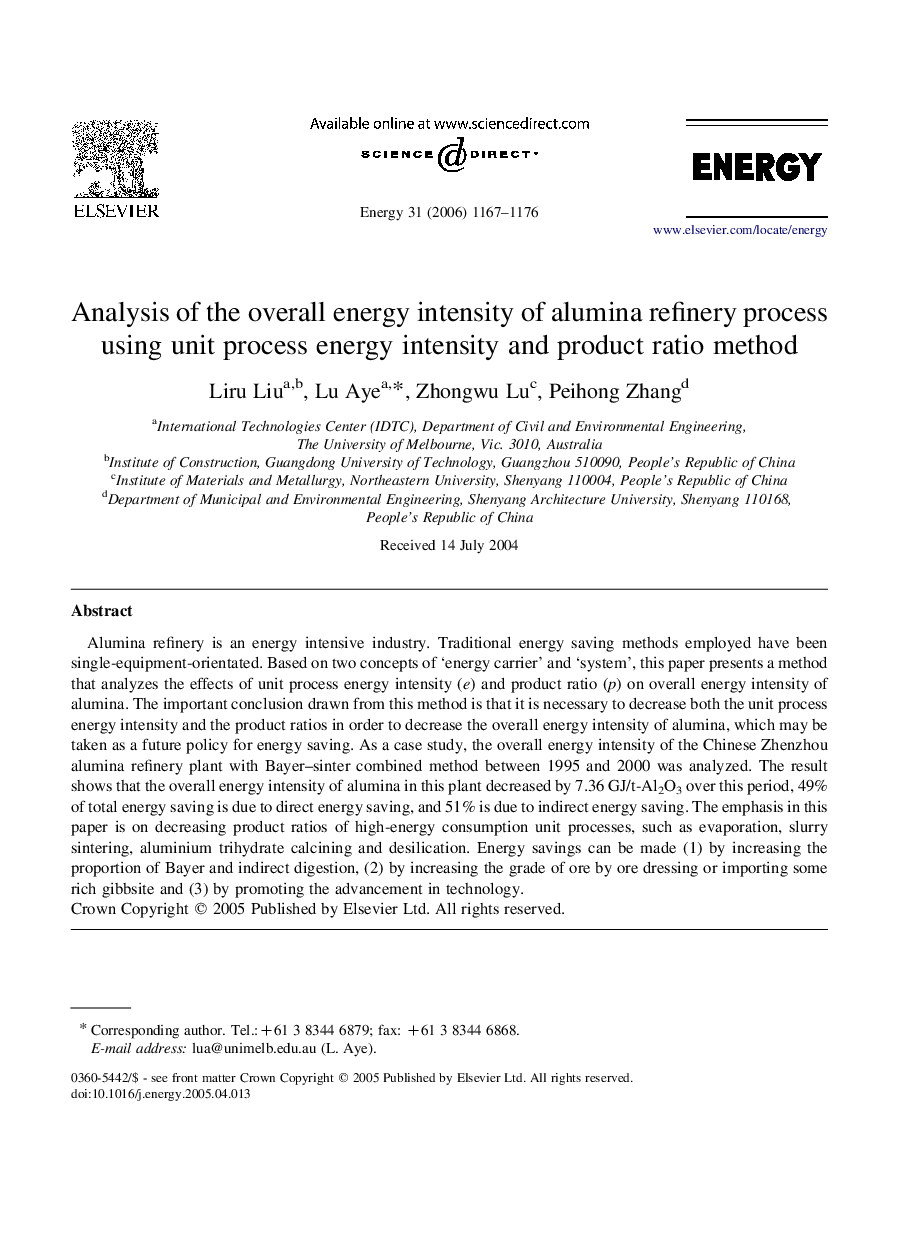| Article ID | Journal | Published Year | Pages | File Type |
|---|---|---|---|---|
| 1736431 | Energy | 2006 | 10 Pages |
Alumina refinery is an energy intensive industry. Traditional energy saving methods employed have been single-equipment-orientated. Based on two concepts of ‘energy carrier’ and ‘system’, this paper presents a method that analyzes the effects of unit process energy intensity (e) and product ratio (p) on overall energy intensity of alumina. The important conclusion drawn from this method is that it is necessary to decrease both the unit process energy intensity and the product ratios in order to decrease the overall energy intensity of alumina, which may be taken as a future policy for energy saving. As a case study, the overall energy intensity of the Chinese Zhenzhou alumina refinery plant with Bayer–sinter combined method between 1995 and 2000 was analyzed. The result shows that the overall energy intensity of alumina in this plant decreased by 7.36 GJ/t-Al2O3 over this period, 49% of total energy saving is due to direct energy saving, and 51% is due to indirect energy saving. The emphasis in this paper is on decreasing product ratios of high-energy consumption unit processes, such as evaporation, slurry sintering, aluminium trihydrate calcining and desilication. Energy savings can be made (1) by increasing the proportion of Bayer and indirect digestion, (2) by increasing the grade of ore by ore dressing or importing some rich gibbsite and (3) by promoting the advancement in technology.
